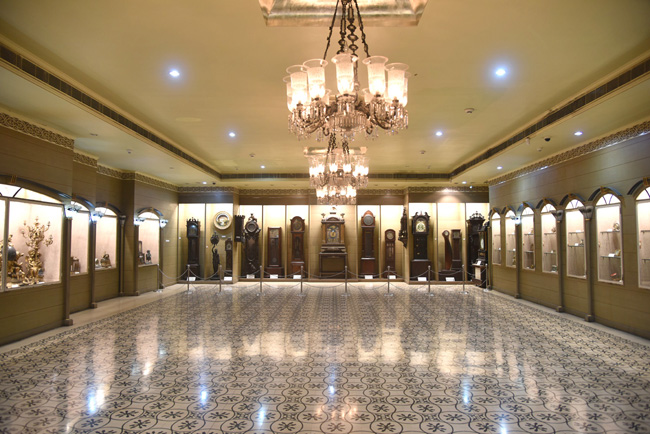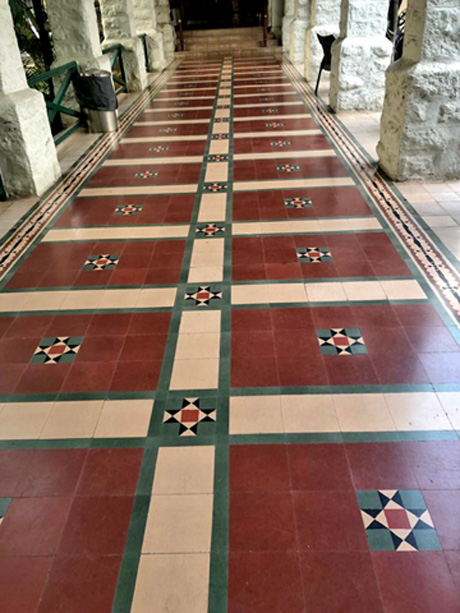100 Years
100 Stories

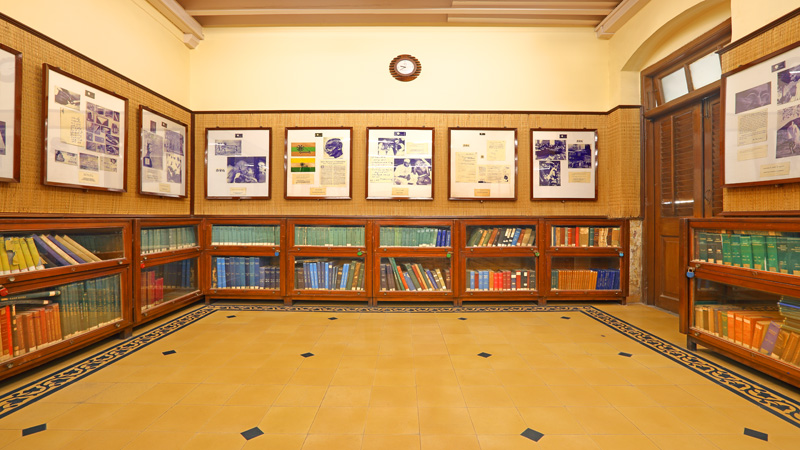
The alarm bells resounded. There was an outcry from heritage circles in the mid 1990s over increasing government and popular apathy towards heritage precincts. The outcry contributed to ensuring that India's architectural heritage is not lost forever. Heritage buildings and precincts act as markers of historical events and illustrate the stylistic trends of a particular period. However, due to intense commercialization pressures, depreciating heritage values and the high expense of maintaining a heritage building, many of these buildings were crumbling away.
Restoring a heritage structure brick by brick is a challenge in itself due to the non-availability of materials and skills long lost. To solve the problem, conservationists, architects, activists and sometimes government bodies have joined hands with legacy companies in doing their bit to preserve the unique features of heritage buildings.
Even while the facades of these crumbling mansions may attract attention, the floors which form an intrinsic part of these historic structures are often overlooked. The gorgeous encaustic clay or cement tiles of these structures tell the story of a bygone era, lending character to the city’s iconic buildings for generations. The floorings, as one of the longest lasting decorative elements, form a vital component of the city’s unique DNA.
But they are often ripped off and replaced by “modern” tiles without understanding the damage it does to the character of the building, stripping away its value. However, Bharat Floorings and Tiles has been an active participant in the heritage restoration movement, taking up the mantle of restoring the heritage floors of the country.
Founded by Pherozeshah and Rustom Sidhwa in 1922, Bharat’s heritage range of tiles was re-introduced by Dilnavaz Variava in 1999 when she was horrified by how flooring of heritage structures was carelessly replaced with inappropriate designs without any regard for restoration. The company’s brand revival sparked a flurry of restoration jobs in the heritage sector and, in close collaboration with numerous conservation architects, Bharat played a crucial role in restoring floors of famous heritage sites all across India. Notable mentions would include the Dr. Bhau Daji Lad Museum, The Royal Bombay Yacht Club, Mani Bhavan, Salar Jung Museum. The Cathedral & John Cannon School and the Secunderabad Club, amongst many others.
Established in 1855 as a treasure house of decorative and industrial art, the Dr Bhau Daji Lad Museum or the erstwhile Victoria and Albert Museum, represents an important landmark of restoration work contributed to by Bharat. The dismal condition of the building prompted the need for immediate conservation. The Municipal Corporation of Greater Mumbai, Jamnalal Bajaj Foundation and INTACH worked on restoration with the help of Architect Vikas Dilawari. Following a comprehensive conservation strategy, both the external facade as well as the interior was painstakingly restored over 5 years.
Bharat played a role in bringing the BDL museum back to its former splendour by the flooring in the entrance lobby . Heavy foot traffic, rising damp and a variety of other factors had resulted in neglect, wear and damage. A section of damaged tiles at the entrance to the main hall were replaced with the Star and Diamond pattern tiles from Bharat’s Heritage collection, in colours of gold and green and red to match the rest of the restoration and red pavement tiles were also installed in the surroundings of the museum.
Awarded the 2005 UNESCO Asia Pacific Heritage Award of Excellence for Conservation, the BDL Museum restoration remains “a new benchmark in the conservation of museums for India and the region”
At The Royal Bombay Yacht Club, one of the premier gentlemen's clubs established in 1846, Bharat took justifiable pride in creating tiles that reflected key element of the original Minton floor. One of BFT’s best projects, a lot of effort was put into getting the correct design and sizes for each component of the design.
The project posed an interesting challenge though. Bharat had to create new stencils and colour schemes to achieve the desired look because its floors combine six different patterns rather than the typical two or three elements found in heritage floors. Over several months, prototypes were developed until the floor was a near-exact reproduction of the original Minton floor. As Architect Vikas Dilawari said, “We copied it and made special moulds and when you do such kind of work it elevates the benchmark”.
Helmed by Conservation Architect Vikas Dilawari, with a unique contribution by BFT, The Royal Bombay Yacht Club was another Bharat Floorings & Tiles project that was honoured with the UNESCO Asia Pacific Award in 2013 for their sensitive endeavour in preserving the iconic structure.
Mani Bhavan, a house built in 1916 by Gandhi’s friend Revashankar Jagjeevan Jhaveri which played host to Gandhi during the critical years of India's Independence, underwent a lot of restoration work under the careful eye of Conservation Architect Abha Narain Lambah in 2006.
Carrying immense cultural and architectural significance due to its association with Gandhiji as well as the Satyagraha and the swadeshi movements. The Bharat Flooring Tiles Company had been established in response to the Mahatma’s call for swadeshi. A close colleague of Gandhiji, Mr Jamshed Nusserwanji Mehta, had inspired Pheroze and Rustom Sidhwa to start a tile factory and they named it Bharat to declare their commitment to swaraj. Bharat Tiles had been used in several parts of the original building. Its restoration was carried out in line with the history of the building. China mosaic and plain tiles, by Bharat were part of the original floor of the building. Some areas had been tiled over with ceramic bathroom tiles over the years.
With Arch Abha Narain Lambha’s sensitivity, these areas were replaced by heritage design tiles made by Bharat. Given the history of the company’s linkage to Gandhiji’s call of swaraj, Dilnavaz Variava, chairperson of BFT, took a personal interest to ensure quality service. It continues to be among the most exquisite restoration projects undertaken by Bharat, and has deep meaning for the company as Gandhiji walked on the original Bharat floors which still exist in some places, and its floors, both original and restored, have seen the footfall of Presidents and Prime Minister, the famous and the lay public from across the world.
Bharat’s heritage range of tiles also attracted the interest of architects outside of Mumbai, who were delighted with the collection and confident in the quality of the company’s product. Salar Jung Museum in Hyderabad, restored by Architect Kasim Ali Khan, proudly features Bharat’s Tulip pattern tile with a vine border in restoring the European clock gallery.
Bharat tiles were also the preferred choice when Architect Kasim Ali Khan restored the Secunderabad Club, one of the oldest clubs in India. One of his first projects with BFT, Khan used Bharat tiles and incorporated his designs through their flooring, tweaking the colours and using the patterns in a different and reversed manner. He insisted on using Bharat tiles, believing in their durability and in them being a class apart from others, “They are different from others and yield fine results. They are a very old company that stood the test of time. And walking on their tiles for years, using it, gives that shine. I am confident that Bharat will continue proving themselves, as they have done earlier.”
As cities develop and expand away from where it all began, the built heritage of India, comprising various types of stone, tiles, jointing, bedding, and plastering materials, becomes increasingly vulnerable. Exposed to different climatic conditions, each material is affected in its own way and restoration of these buildings necessitates unique solutions. Traditional techniques and craftsmanship are maintained by but a few specialist companies, as most compromise on quality and wither away.
Bharat's introduction of their heritage range of tiles, and their efforts to restore the floors of these landmark structures with handmade, artisanal tiles that respect the original designs, colours and production processes, addresses the critical need to preserve our cultural heritage and craftsmanship. Bharat's work is a clarion call, an indication that all will not be lost if proper measures are taken and sensitive restoration is done. Now, all that remains is for various heritage stakeholders to heed the call and restore these priceless pieces of our history.
You may also like
-
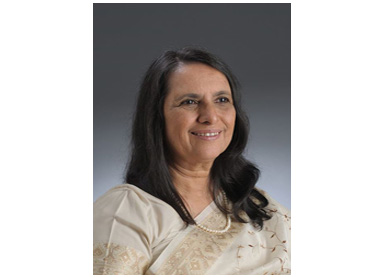 47People Behind Bharat: DSVWhen factories were shutting shop by the dozen, Dilnavaz Variava stuck her neck out and kept BFT afloat through the company’s most unstable phase. Delve into the personal story of the chairperson of Bharat and the effort she undertook to keep her legacy relevant.Read More
47People Behind Bharat: DSVWhen factories were shutting shop by the dozen, Dilnavaz Variava stuck her neck out and kept BFT afloat through the company’s most unstable phase. Delve into the personal story of the chairperson of Bharat and the effort she undertook to keep her legacy relevant.Read More -
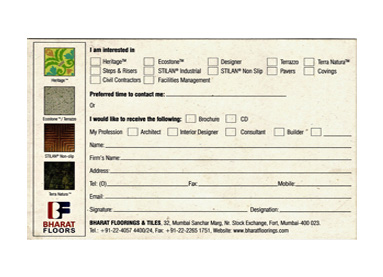 48Archival Find: Business CardCurious about how inquires for businesses carried out before the era of smartphones and Google? Presenting to you Bharat's collection of business cards from the 1990s till dateRead More
48Archival Find: Business CardCurious about how inquires for businesses carried out before the era of smartphones and Google? Presenting to you Bharat's collection of business cards from the 1990s till dateRead More -
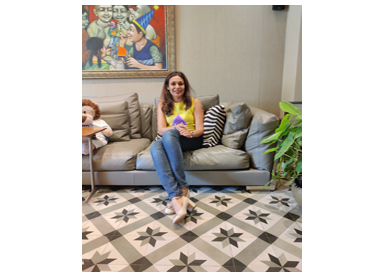 49My Home Series: Aarti Parasrampuria, Brady's Flat, ColabaHigh ceilings, heritage tiles and an apartment that evokes a visceral feeling of admiration - Aarti Parasrampuria's home in Bombay's iconic Brady's apartment in Colaba remains a vintage dream come true for the modern day entrepreneurRead More
49My Home Series: Aarti Parasrampuria, Brady's Flat, ColabaHigh ceilings, heritage tiles and an apartment that evokes a visceral feeling of admiration - Aarti Parasrampuria's home in Bombay's iconic Brady's apartment in Colaba remains a vintage dream come true for the modern day entrepreneurRead More




